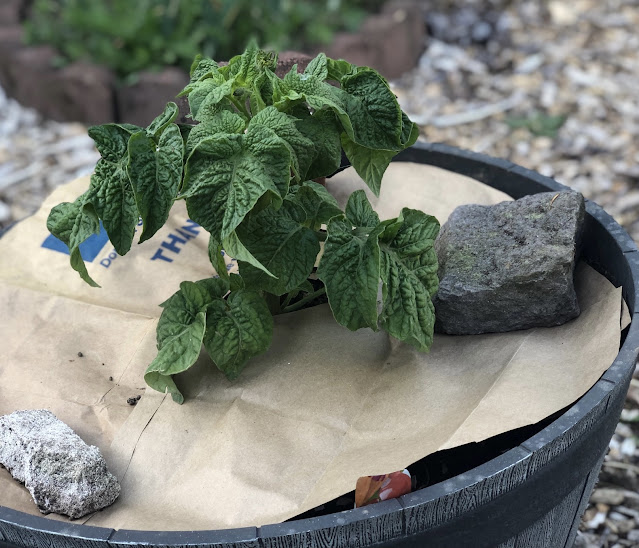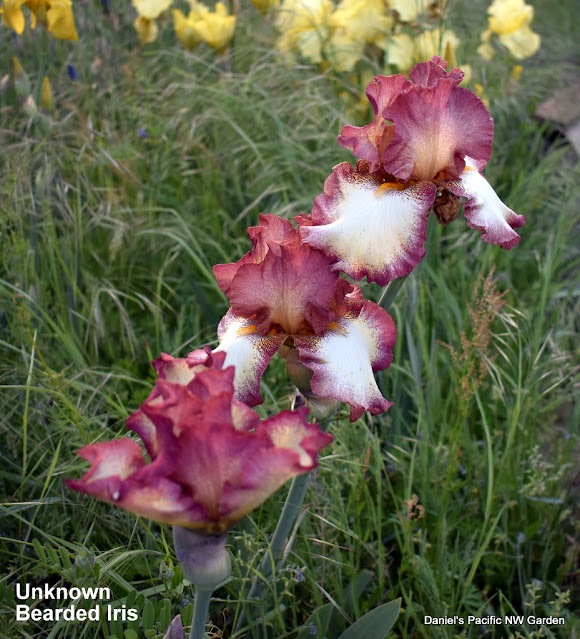Most of the sweet corn that I planted earlier has germinated. There are always a few spots that don't come up. I don't know if it's the seeds, or if birds or other animals have stolen the seeds. Since I plant them with some to spare. I move plants to empty spots while still very small.
I also planted some main season sweet corn seeds, Ambrosia. Since I read that sweet corn seeds don't usually keep more than a year or two, I planted new seeds. These are hybrids and also it takes a lot of sweet corn plants for genetic stability if saving seeds, so I don't plan to save seeds from these.
I also planted seeds for some dill weed.
I keep fencing tunnels as protectors until the corn plants are about a foot tall, or more. Deer or rabbits eat them when they are small and tender, but not when larger.
The Trinity seems to have grown better than the Suglow. Next year I should just go with Trinity for the early type. I think it's more productive and better tasting. This year I can compare side by side.
Here is the new block of Ambrosia, an SE type. I also have a packet of the variety "Delectable" which will go into the remaining blocks in about 2 weeks. The roll of fencing is there to annoy and frustrate birds that sometimes dig out corn seeds. I can make more fencing tunnels in a few days;
I'm trying not to spend too much time outside due to neighboring properties burning so much wet brush (and other stuff), the air is smoky and breathing cn be difficult. Country air here in Battleground is not necessarily cleaner than city. In fact, it's often far worse than Vancouver :-( I hope they stop burning stuff for a while so I can get back into the garden. For what it's worth, countryside here is much noisier than the city too - leaf blowers, big mowers, chain saws, and other power equipment. But it's worth it for now, for the garden size and option to have chickens.
I had some old dill seeds (Burpee) and new (Victory) so I mixed them together in the row. Dill isn't hybrid, so no problem saving seeds.

















































